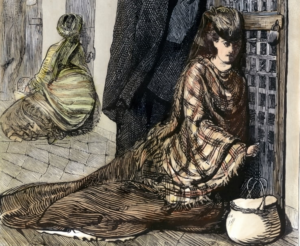The Sad Tale of the Slacker-Corporate War

Not long ago a generation of youth culture was becoming disenfranchised, and resistance to ‘the system’ was gaining cultural mass appeal (in a way not quite possible in today’s more tightly controlled public space). ‘Slackerism’ was the youthful subculture which toted this anti-system sentiment, doing so in an almost spiritual sense, as best exemplified by the movement’s swan song: Mike Judge’s Office Space.
In this the hero, Peter, undergoes a Jungian style awakening which frees him from the doldrums of corporate slavery, which was until then going largely unrecognized as a matter of bizarre and oppressive ‘social science’. The Slacker’s ancient intuitions found an enemy in the perceived modern ordinariness of water-cooler conversations, pencil pushing, and the bureaucracy which dominated the sprawling urban jungles of glass high-rises filled with cubicles tanned with yellow fluorescent lighting.
The Slacker, feeling ironically free from social shaming, saw this truthfully as a sort of cuckoldry of the human spirit, and set about creating satires of violent revolution in this setting – such as episodes of ‘Kids in the Hall’, where the big corporation would end up handling their problems with swords, alien abduction, or eating their business proposals. These satires (gems of truth) were seen through the prism of humour, and a pointed the Slacker as champion to the untamed beast inside of man – yearning for greater purpose within the heart of every shackled cubicle worker.
There was in the 90s an injection of nihilism into culture. Where previous generations had a soundtrack of self belief (eg. Journey singing “Don’t Stop Believing”) the cultural masters of the 90s decided that that the youth deserved punishment in the form of Grunge, Heroin Chic, and the always-say-die leftist-punk attitude of self-hatred and bleakness-irony. This aided in breeding contempt from the youth towards their elders, towards their society, a trend begun somewhat innocently (if in earnest) in the 80s, but becoming acute in the 90s. This facilitated the subtle and viral spread that the idea of the family unit was oppressive, an affront to rank, nihilistic, individualism. The older generations overseeing this decline were rendered powerless by an economic and cultural prosperity. Even a glut of consumer luxury.
Some people today try to sit down with their parents in the hopes of giving them their perspective on politics, culture, or the world at large. Generally information they learned on the internet. Commonly they are met with vacant stares, disinterest, or even anger, and are soon forced to admit defeat. The Baby Boomer generation was to be the first raised from infancy with a television in the household. The television is the Boomer Generation’s third parent, whomever contests the TV’s narratives will be fought with all the potent vigor of defending a family member. Any successful attack on mainstream propaganda that is landed by someone of later generations, will later be washed away as soon as the boomer sits down with their third parent for their daily lesson. This, coupled with the most successful quality of life in the history of humanity (now squandered) and we find in the mainstream-imbiber a rock solid allegiance to the system.
Newer generations have no real idea what it is like to have a culture which is not in constant opposition to them, to have a sense community. Examining generational divides we start to understand the effectiveness of the youthful resentment pushed in the 90s by media giants like MTV, creating a culture of generational disdain, culminating in the war between Slackers and the Corporate class.
This battle took many forms that would eventually outpace the creative energy of the slackers, leaving them with an ineffective hedonism and a stunted youth that would become the outline of the “bugman”. College culture of the 90s lost it’s clever aloofness, succumbing to the emerging ills of learned institutions we see today: deconstructivist critical theory and the victim hierarchy. Eventually a corporatized culture emerged with a rank and file false-sincerity that fell right in line with business HR departments. This spelled doom for the Slacker’s signature trait of disinterested ideological aloofness. The corporate class, on the other hand, had no such problem, as they had no foundation in genuine cultural competition. The culture inside the corporate entity was protected from a natural selection pressure that the Slackers were under.
Like all cultures that champion creative alternatives to a prevailing system, the Slacker was destined to be crushed. The care-free attitude of 90s hacky-sack and brightly-colored fashion was consumed by it’s own nihilism, before collectivization could give the corporate caste any real opposition. A movement as such will shout “Down with the Man” until it becomes apparent who the man really is, then the process of cultural redirection spins that movement into backing the very thing they were fighting against in the first place, inevitably swallowing it whole and birthing horrors more heinous than Angrboða could imagine in her wildest womb-imaginings.
Alegria Art is the ‘organic art’ that emerged as our final and culminating creative form. We all know this style, the dumpy purple people on every corporate ad, the squiggly noodle arms in flat graphic style, with a label so Orwellian that it is indecipherable from satire. Alegria, meaning ‘joy’ in spanish, is the perfect word for the rootless art style of international and corporate capitalism. It comes from a place so devoid of humanity that it almost seems a hostile race of Aliens from space have put it in the consciousness of those whom they wish to conquer. It is an uncanny valley of non offensive aesthetic check-marking. Just as the Bolsheviks filled their public space with bleak, inhuman, brutalism to crush the will of the common man, Alegria represents the ever-present doom of the creative human spirit. A Pandora’s Box to hell wrapped in bubble wrap and glitter, spouting Lovecraftian psychic demons to eat the dreams of little children – consumed by the androgynous Alegrian purple creature who stands over the smouldering remnants of civilization to the sound of happy whistling and ukulele music.
The 90s Slacker rebelled without having a grasp on what true identity was, making the Slacker impotent right from the start. When a movement has no foundation, it has no means of building an architecture of defense. If we’ve learned anything from the Slackers, it is that without necessary defensive principles, any movement will find itself becoming part of the machine it rebelled against in the first place.











